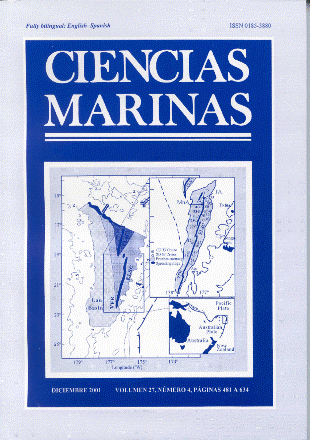Oceanographic and climatic variability in the lower gulf of california: links with the tropics and north pacific
Main Article Content
Abstract
The links between climate and oceanography in the lower Gulf of California (LGC) and the observed physical variability in the open Pacific were studied on interannual to decadal timescales. Two indices reflect the North Pacific´ s oceanic and climatic variability: the El Niño Southern Oscillation index (ENSO) and the North Pacific Decadal Oscillation index (PDO). The sea surface temperatures, wind speed, precipitation and sea level records of La Paz region, Baja California Sur (Mexico) in the LGC were used to compare them with the PDO and ENSO indices. The most important forcing processes were observed coming from the tropical and the equatorial Pacific, represented by the ENSO index, significantly associated with precipitation, sea surface temperature (SST) and sea level. The Northern Pacific influence, represented by the PDO index, is associated with the winds and to a lesser extent with SSTs and precipitation. These results show that SST variability in the region is controlled by both indices. A model is proposed to explain the control that each of them exerts on the LGC SST variability. In this model the excess heat brought by surface tropical waters, especially after the intensification of ENSO events since the 1980s, in addition to the long term warming observed over the past century, is partially dissipated by stronger winter winds in the gulf. These stronger and cooler winds, derived from changes in the atmospheric circulation patterns of the North Pacific and captured by the PDO positive anomalies, act as negative feedback to the warming dissipating part of the accumulated heat and dampening the raise in SSTs. This process is proposed to operate, especially after the 1970s sign shift of the PDO, when no change in the SSTs´ trend occurs showing an opposite behavior in respect to wind variability, which was not observed for previous decades.
Downloads
Article Details
This is an open access article distributed under a Creative Commons Attribution 4.0 License, which allows you to share and adapt the work, as long as you give appropriate credit to the original author(s) and the source, provide a link to the Creative Commons license, and indicate if changes were made. Figures, tables and other elements in the article are included in the article’s CC BY 4.0 license, unless otherwise indicated. The journal title is protected by copyrights and not subject to this license. Full license deed can be viewed here.

